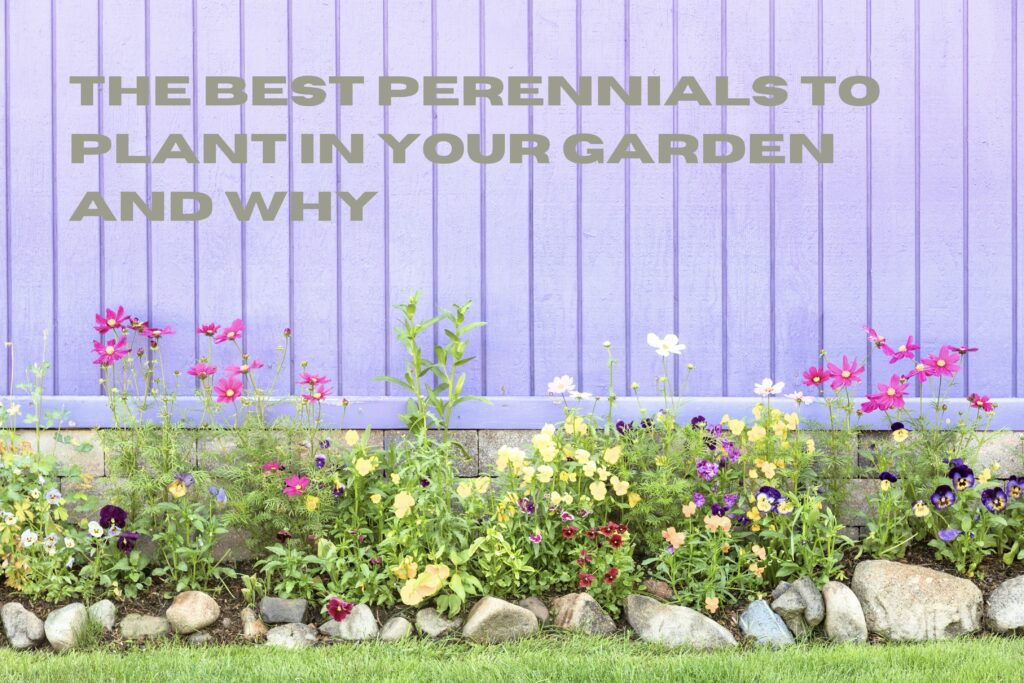Table of Contents
Choosing the best perennials for your garden depends on various factors such as your location, soil type, and personal preferences. You can count on multiple of these perennials to take a polar vortex or two and come back strong in the spring. Here is a list of 12 popular perennials that are often favored for their beauty, versatility, and other beneficial qualities.
1) Lavender
Lavender is well-known for its delightful fragrance. The aromatic oils released by the lavender plant can add a pleasant scent to your garden and are often used in various products like essential oils, sachets, and potpourris. Lavender has been used for its medicinal properties for centuries. The essential oil extracted from lavender has calming and soothing effects, making it a popular choice for aromatherapy. Additionally, lavender is known for its potential antimicrobial and anti-inflammatory properties. Certain lavender varieties, especially English lavender, are edible and can be used in cooking. They add a unique flavor to dishes and are often used in deserts, teas, and as a garnish.
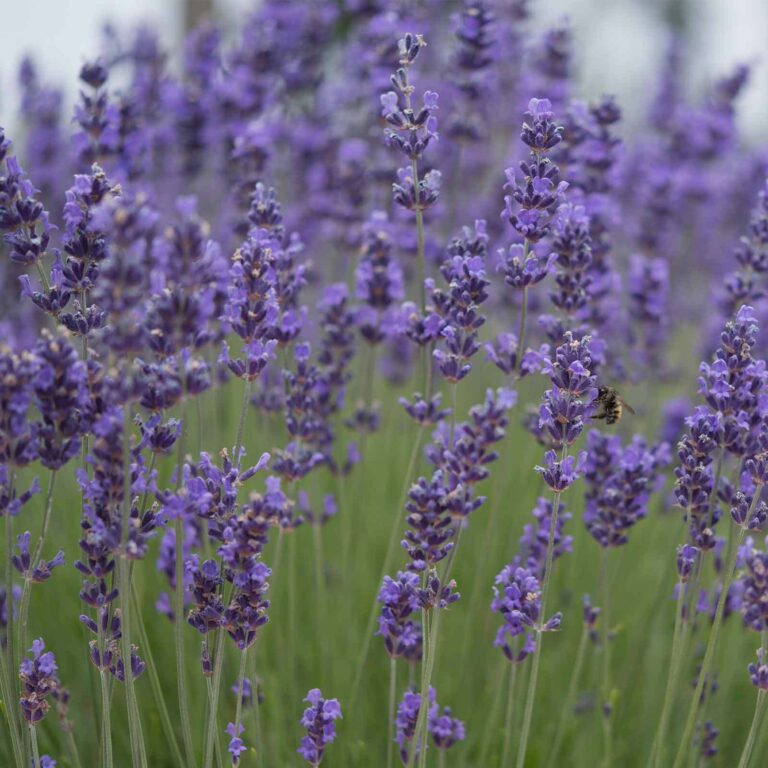
2) Hosta
Hostas can be known for their shade tolerance. If you have areas in your garden with limited sunlight, such as under trees or along shaded borders, hostas can thrive and add visual interest to these space. They are an excellent choice for gardens where direct sunlight is scarce. Hostas are generally low-maintenance plants. Therefore once established, they require minimal care. They are not prone to many pests or diseases, making them an easy-to-care-for option for gardeners with varying levels of experience. One of the standout features of hostas is their diverse foliage. Hostas come in a wide range of leaf colors, shapes, and textures. From solid greens to variegated patterns, the variety allows you to create visually appealing combinations in your garden.

3) Peony
One of the primary attractions of peonies is their stunning, large, and extravagant flowers. Peonies come in a variety of colors, including shades of white, pink, red, and even coral. The impressive blooms make peonies a focal point in the garden, adding a touch of elegance and beauty. Peonies make excellent cut flowers. The sturdy stems and long-lasting blooms make them a favorite for floral arrangements. Bringing peonies indoors allows you to enjoy their beauty and fragrance inside your home. Peonies are adaptable to different climates, with many varieties suitable for both cold and temperature regions. They can withstand winter chill, making them a popular choice in northern gardens.
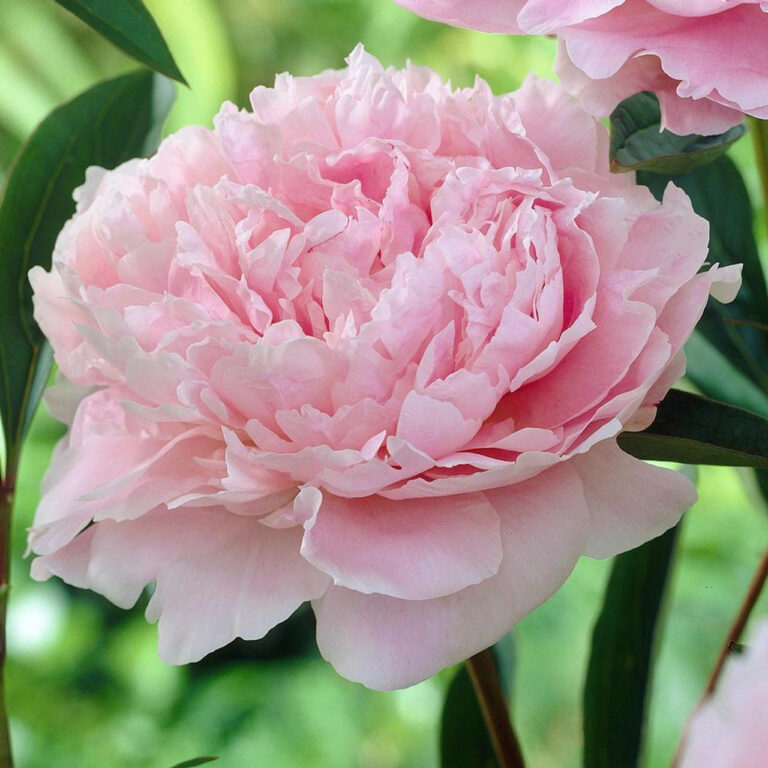
4) Coneflower
Coneflowers are known for their ability to attract a variety of pollinators, including bees, butterflies, and beneficial insects. The prominent, cone-shaped flower heads provide a landing platform for pollinators, contributing to the overall health and biodiversity of your garden. Coneflowers are well-adapted to dry and hot conditions, making them an excellent choice for gardens with limited water resources or those experiencing periods of drought. Coneflowers have a tendency to naturalize and spread gradually. This can be an advantage if you want to create drifts of color in your garden over time. However, it’s essential to monitor their spread to prevent overcrowding in the garden.

5) Daylily
Daylilies are renowned for their low-maintenance nature. They are hardy and adaptable to various soil types and growing conditions. Once established, daylilies require minimal care, making them an excellent choice for busy gardeners or those seeking plants that thrive with minimal intervention. Daylilies come in multiple colors, including shades of yellow, orange, red, pink, and lavender. The variety gives you an opportunity to pick daylilies that complement your garden color scheme or create vibrant and contrasting displays. Daylilies are adaptable to a variety of growing conditions and can withstand challenging conditions such as heat and periods of drought. Their resilience makes them suitable for a wide range of climates and weather conditions.
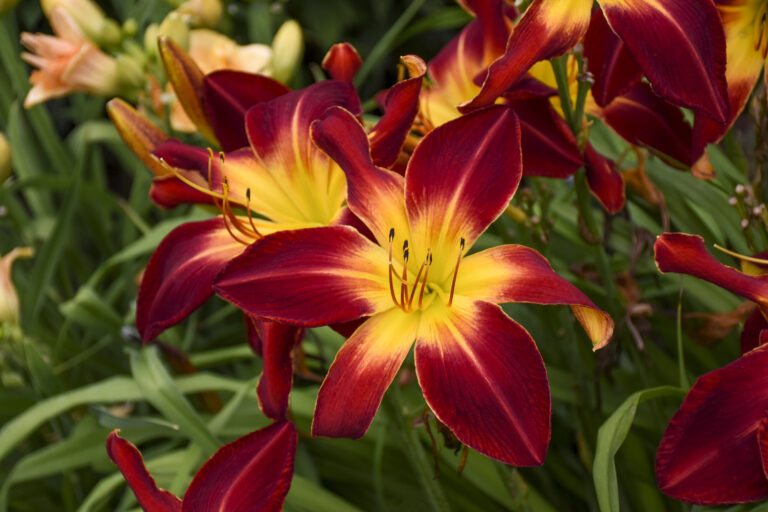
6) Salvia
Salvia plants are known for their attractive flowers that are rich in nectar, making them excellent pollinator magnets. Bees, butterflies, and hummingbirds are commonly drawn to the tubular-shaped flowers, contributing to the overall health of your garden ecosystem. Some Salvia varieties have fragrant foliage, adding an extra sensory element to your garden. Brushing against or crushing the leaves can release pleasant scents that can be enjoyed as your navigate through your garden.

7) Black-Eyed Susan
Black-Eyed Susans are known for their adaptability and ease of cultivation. They thrive in a variety of soil types, including well-drained soils, and can tolerate different levels of sunlight, making them suitable for various garden conditions. Their resilience makes them an excellent choice for both experienced and novice gardeners. Black-Eyed Susans are drought-tolerant and can withstand periods of dry weather, requiring less frequent watering than some other garden plants. Deadheading spent flowers can encourage additional blooms and extend the flowering season. Black-Eyed Susans also make great cut flowers. The long stems and vibrant blooms can be used in floral arrangements, allowing you to bring the beauty of your garden indoors.
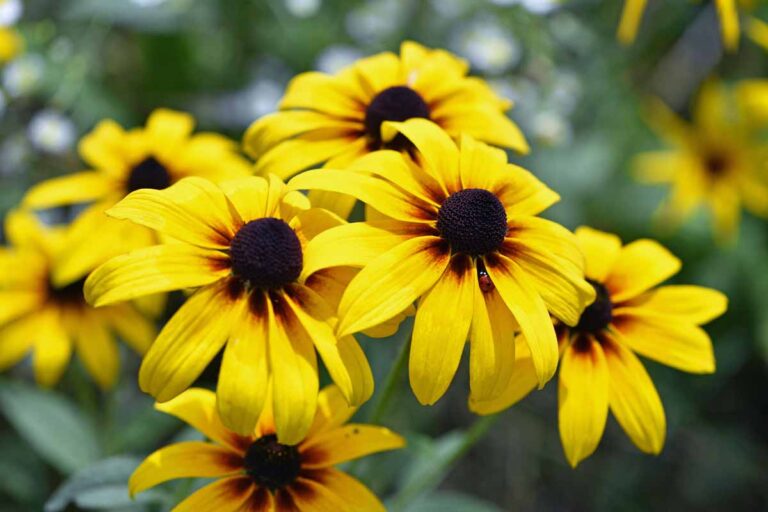
8) Russian Sage
Russian Sage is prized for its aromatic foliage. The leaves and stems emit a pleasant, earthy fragrance, especially when brushed against or crushed. This fragrant quality adds an additional sensory dimension to your garden, making it an appealing choice for those who appreciate scented plants. It is known for its ability to thrive in dry and arid conditions, making it a valuable addition to gardens in regions with water scarcity or where water conservation is a priority. Russian Sage produces spikes of small, tubular flowers that add vertical interest to the garden. The flowering period typically extends from midsummer to early fall providing a prolonged display of color.
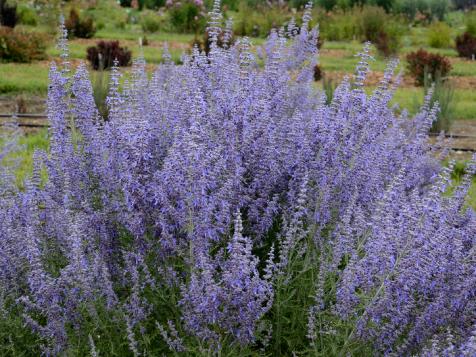
9) Sedum
Sedums are generally low-maintenance plants. They are hardy and adaptable requiring minimal care once established. Many Sedum species can tolerate poor or rocky soils, making them suitable for challenging planting sites. Their adaptability to less-than-ideal soil conditions can be advantageous in creating visually appealing landscapes in areas where soil quality may be a limiting factor. Sedum flowers are nectar-rich providing a food source for pollinators including butterflies, which contribute to the health of your garden. Sedums can add beauty, texture, and ecological benefits to your garden.
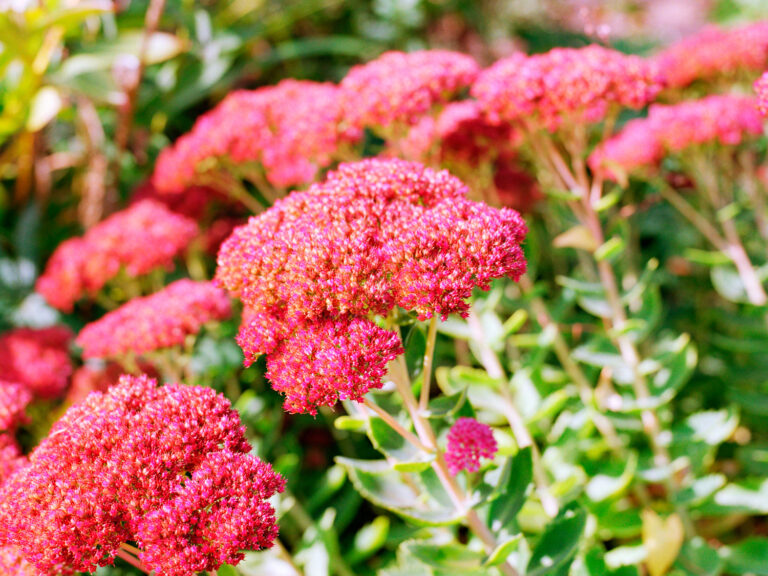
10) Coreopsis
Coreopsis is known for providing continuous blooms throughout the growing season. The daisy-like flowers come in various colors, including shads of yellow, orange, and pink. The extended flowering period ensures that your garden remains vibrant and colorful. Coreopsis is also known for its drought tolerance, making it an ideal choice for gardens in regions with hot and dry climates or for those looking to conserve water. It works well as a border plant, in mass plantings, in rock gardens, or as part of mixed perennial beds. The diverse forms and sizes of Coreopsis species and cultivars provide flexibility in garden design.

11) Bee Balm
Bee Balm is renowned for its ability to attract a variety of pollinators, including bees, butterflies, and hummingbirds. It comes in various colors, such as reds, pinks, purples, and whites. The availability of different colors enhances the aesthetic appeal of your garden. Bee Balm is very versatile in landscaping and can be used in various garden settings. It is less appealing to deer and rabbits, making it a good choice for gardens where these animals may be present. Bee Balm is suitable for rain gardens or areas with fluctuating water levels, meaning it can tolerate average to slightly moist soils.
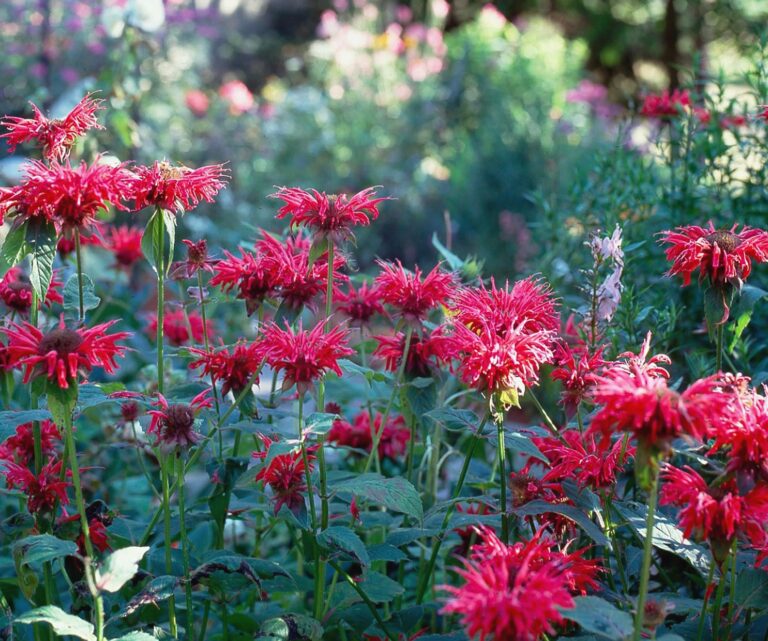
12) Shasta Daisy
Shasta Daisies are known for their timeless and classic appearance with large, pure white blooms and bright yellow centers. The simplicity and elegance of these flowers make them a versatile choice, suitable for various garden styles and color schemes. They produce long-lasting flowers, providing a continuous display of white blooms throughout the summer. Shasta Daisies are generally low-maintenance plants. They can tolerate a variety of soil conditions, making them adaptable to different garden settings. When planting Shasta Daisies, provide them with a well-drained soil and a location that receives at least partial sunlight. Regular deadheading can help with continuous blooming, and dividing clumps every few years to help rejuvenate the plants.
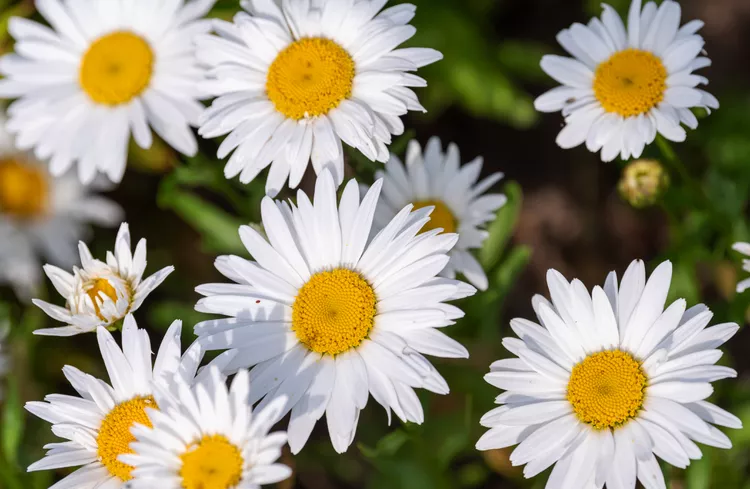
When selecting perennials for your garden, consider factors such as sunlight, soil type, and climate to ensure they thrive in your specific conditions. A well-planned combination of these perennials can provide continuous blooms throughout the growing season, adding beauty and diversity to your garden. Once you’ve decided what perennials are best for your garden, you will need to prepare your garden for the spring season. To learn more about this topic, read our blog 4 Tips for Preparing your Garden for Spring. As the winter approaches, you’ll need to follow the best practices about Preparing your Garden for Winter. If you want more customized assistance, feel free to contact His Workmanship for additional support on how to best go about selecting perennials for your garden.



